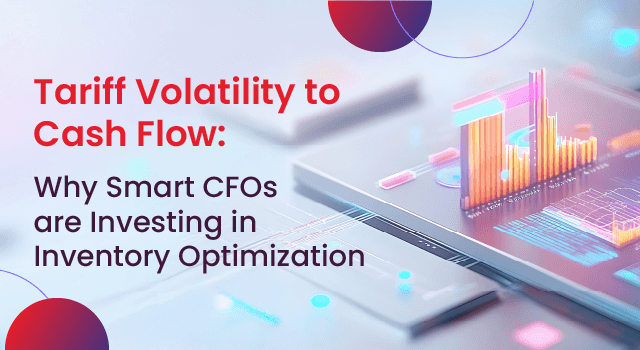Explore the fundamentals of inventory turnover and its impact on business.
Efficient inventory turnover is a linchpin for a business’s financial health. By keeping a close eye on optimizing inventory turnover, businesses can enhance efficiency, make better resource decisions, and, in turn, strengthen their overall bottom line. Imagine a warehouse that accurately restocks its fast-selling items, preventing excess stock and ensuring a steady cash flow. That’s the power of efficient inventory turnover.
This article explores the concept of inventory turnover, its significance, the formula to calculate it, and the impact of a high inventory turnover ratio. We’ll examine real-world examples of businesses that have effectively managed inventory turnover and highlight strategies for improving this key metric.
Table of contents:
1 What is inventory turnover?
Inventory turnover is a financial metric measuring how often a business’s inventory is sold and replaced within a specific period, typically annually. Inventory turnover holds significant implications for SMBs such as:
- Operational efficiency: A high inventory turnover indicates efficient management, ensuring products move quickly and are profitable. For SMBs, this efficiency minimizes the risk of holding excess stock and unlocking operating cash.
- Working capital management: Efficient inventory turnover reduces the need for excessive working capital tied up in excess inventory.
- Risk mitigation: SMBs often face challenges with warehouse space and product obsolescence. A healthy turnover ratio minimizes the risk of holding obsolete stock and frees up space for profitable items.
- Customer loyalty and satisfaction: Swift inventory turnover ensures SMBs can meet customer demands promptly. This responsiveness enhances customer satisfaction and loyalty.
- Fiscal health: Investors and lenders often assess inventory turnover to gauge the financial health of a business. A well-managed inventory turnover can instill confidence in stakeholders.
- Adaptability to market changes: SMBs need to adapt quickly to market fluctuations. A high inventory turnover enables agility in responding to changes in demand.
2 Why do businesses use inventory turnover?
SMBs use inventory turnover as more than just a metric. It serves as a tool guiding decisions across various departments.
- Production planning: Inventory turnover acts as a strategic guide for production planning. Businesses can align their manufacturing schedules and planning with inventory depletion, optimizing resources, and minimizing excess production.
- Purchasing behavior: Businesses can make informed purchasing decisions by assessing the rate at which products are sold. This prevents excess stock or stock-outs, ensuring inventory levels align with customer demand.
- Resource optimization: Understanding inventory turnover allows businesses to optimize resources. Businesses can allocate resources more efficiently, from warehouse space to the manpower needed, when there’s a clear picture of how quickly items are moving.
- Identifying slow-moving items: Through inventory turnover, businesses can locate slow-moving items.
3 What is the inventory turnover ratio formula?
While the fundamental formula for inventory turnover provides a broad perspective, businesses often benefit from considering additional variations for a more comprehensive analysis.
To understand the inventory turnover ratio, it’s essential to know the Cost of Goods Sold (COGS) formula, as it forms the basis for the inventory turnover calculation.
- Cost of Goods Sold (COGS):
COGS = Beginning Inventory + Purchases − Ending Inventory
The formula calculates the cost of goods a business sells during a specific period. It considers the starting inventory, purchases made during the period, and subtracts the ending inventory to determine the direct costs associated with producing or acquiring the items sold.
- Basic inventory turnover ratio:
Inventory Turnover Ratio = Cost of Goods Sold (COGS) / Average Inventory
- Days Sales of Inventory (DSI):
DSI measures the average number of days it takes for a business to sell its entire inventory during a specific period. It is calculated as:
DSI = Number of Days in Period / Inventory Turnover Ratio
- Gross Margin Return on Inventory Investment (GMROII):
GMROII incorporates the gross margin to assess how effectively a company converts its inventory investment into gross profit. The formula is:
GMROII = Gross Profit x 100 / Average Inventory
Here’s a practical example:
If Business X’s beginning inventory was $150,000, purchases during the year amounted to $900,000, and the ending inventory was $300,000.
COGS=$150,000+$900,000−$300,000
COGS=$750,000
We can use this COGS value in the inventory turnover ratio formula:
Inventory Turnover Ratio = COGS / Average Inventory
Inventory Turnover Ratio = $750,000 / $250,000
Inventory Turnover Ratio = 3
This means that, on average, Business X sold and replaced its entire inventory three times during the year.
4 Is a high inventory turnover ratio good?
In our example, a turnover ratio of 3 suggests that Business X is still efficiently managing its inventory. The considerations regarding industry benchmarks and consistency remain essential for a comprehensive analysis.
Here are two considerations:
- Industry benchmarking: The industry norm for turnover ratios may differ based on factors such as the nature of the products, market demand, and business models.
- Consistency: Monitoring the ratio over time helps identify market changes and trends. Typically, a consistent ratio of 3 indicates stability in inventory management practices.
5 Netstock customers improve inventory turnover
Customers who integrated their ERP with Netstock, a leading inventory management solution, gained the visibility to quickly improve their inventory holding, unlock working capital and reduce the risk of stock-outs and excess stock.
Best Vinyl reduced its inventory by 50%“With the Netstock dashboard, I can quickly see stockouts and potential stockouts, which allows me to have a focussed conversation with my sales team to determine what’s coming up and what else I need to consider when placing orders.”
Eustralis achieves 35% inventory reduction in under 7 months“Netstock listens to their customers and to market trends and continually adds functionality that allows us smaller distributors to compete with our larger competitors. What sealed my decision was when I discovered how many large retailers and distributors were using Netstock. Those larger companies all have the same problems that we have, except on a larger scale, so if Netstock works for them, it will most certainly work for us.”
Aquatic AV reduced its inventory holding by $1 million and improved its customer fill rate from 79%-99%“Implementing Netstock helped us gain complete visibility of our inventory, and we can see our combined inventory figures as well as individually, per warehouse, which has significantly benefited us from a global perspective.”
6 How to improve inventory turnover with inventory optimization
By employing predictive inventory solutions and strategies, businesses can enhance the efficiency of their inventory management, ultimately leading to better turnover rates.
Let’s explore how Netstock can improve inventory turnover:
- Dynamic Safety stock
Netstock’s advanced algorithms calculate safety stock dynamically, considering demand variability and supplier lead times. This ensures optimal inventory levels, preventing both stock-outs and excess inventory.
- Classification and ABC Analysis
Categorize your items based on demand patterns through ABC analysis. Businesses can prioritize inventory management time and resources on high-value items, improving overall profits.
- Automated Inventory ordering
Netstock automates replenishment recommendations, factoring in reorder points and order quantities.
- Supplier performance analysis
Netstock facilitates supplier relationships and collaboration, providing visibility into supplier performance and lead times.
- Sales and Operations Planning (S&OP)
Netstock integrates Sales and Operations Planning, aligning inventory decisions with broader business objectives.
- Optimize manufacturing and distribution
Visualize and optimize your manufacturing and distribution processes by producing time-phased production and procurement plans and schedules.
By continuously monitoring your inventory, you’ll meet customer demands, minimize inventory holding costs, and maximize profitability. Netstock’s innovative solutions guide businesses toward an agile and efficient inventory management strategy.
7 Conclusion
Effective inventory turnover is pivotal for the success of a business. Practical strategies, formulaic approaches, and technology integration, such as Netstock’s inventory solutions, highlight its tangible benefits. From mitigating risk to optimizing resources, businesses that master inventory turnover gain agility, efficiency, and sustained financial success.




